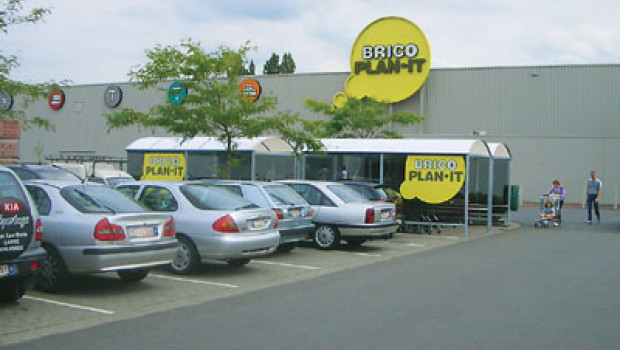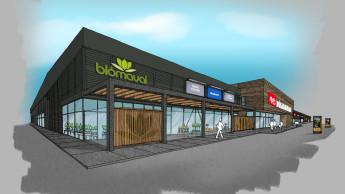A closer look at the Belgian DIY market reveals that the process of consolidation is still ongoing
The takeover battle for Superbois, a company that previously numbered 25 stores, is characteristic of the consolidation phenomenon. Originally strongly represented in the French-speaking part of the country, where it had a great number of DIY stores, the company was typically Belgian in structure – medium-sized stores with retail areas of between 2 000 m² and 3 000 m², located along roads providing access to major shopping centres – which meant it fitted the concept of all three of the big chains (Brico, Gamma and Hubo) and so was courted intensely as the candidate for a takeover bid. The final upshot was that Superbois went to Hubo in the autumn of 2004.
Brico Plan-It, a new name on the Belgian DIY superstore scene.
Leroy Merlin has also disappeared from the Belgian market: its six DIY stores were sold to Brico in 2003 already, and its name will no longer be in evidence from the start of 2005. Brico is transforming these stores into its new format, Brico Plan-It, which was launched in May 2004. This type of outlet sees itself as a “destination store”, offering a range of products that is both broad and deep, as well as specialising in complete projects.
With the addition of Superbois and Leroy Merlin, six brand names have disappeared from the Belgian DIY retail scene since 2001: Bricorama (23 stores) became an Intergamma franchisee in 2001, Selfmade (5 stores) went to Hubo in 2002, as did Bricomarché as well (5 stores), and the two Castorama stores closed down in 2003, though one of them was taken over by Brico.
The existing chains are continuously increasing their market share by means of integrating still more of the independent store operators into their organisation. On the other side, however, it looks as though more and more independent DIY retailers are giving consideration to the role of a specialist niche supplier, trading in a very small region and concentrating on service and quality in order to survive. If such a retailer fails to be consistent, the customer will decide in favour of the broader product offer and the cheaper prices of the big chains.
The big names in the industry and the buying cooperatives made almost 70 per cent of the sector’s sales of E 2.46 bn in the year 2003. Even though the independents do have a great number of outlets, their significance is small in terms of sales.
The trend towards women playing an increasingly important role in the Belgian market is an ongoing one. Woman-friendly products can be found ever more frequently. Here the development is moving less in the direction of adapting existing products – e.g. offering tools that are lighter in weight – and more towards adjusting the product lines. The selection of products in the decorative area is being considerably expanded, or the store layout is being changed, or more strongly geared to “fun shopping”. The DIY store is turning into a retail outlet where it should be a fun experience for women as well.
DIY superstores in Belgium(download .pdf-file)
Belgium
Population: 10.4 mioArea: 31 000 km²Rate of inflation 2003: 1.7 %Rate of unemployment 2003: 8.1 %Gross domestic product 2003: € 265.7 bnReal change to GDP 2003: – 0.8 %













